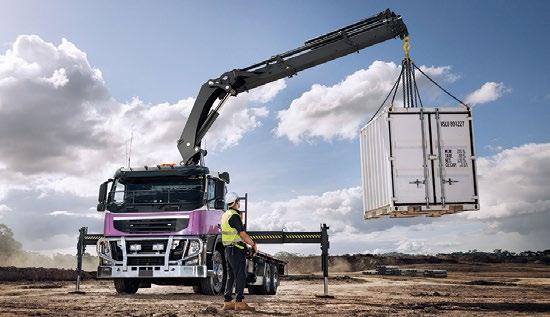
3 minute read
Battery power moves up a gear
Every year we take a look at the latest developments in battery power for equipment such as aerial lifts, telehandlers and cranes.This has usually focused on aerial work platforms, but in the past year telehandler and crane manufacturers have started spending an increasing amount of their development budgets and time on battery power.
Batteries have powered the majority of self-propelled aerial work platforms since the industry’s earliest days, mostly slab electric scissors, small trailer lifts and industrial boom lifts. For most of that time battery developments in the sector have been limited. In fact, in this feature a few years back the manager of a major battery manufacturer was adamant that there was zero chance of lithium or any other new battery technology replacing lead acid batteries on boom or scissor lifts in our lifetime. The traditional lead acid battery is highly efficient, relatively cheap and 98 percent recyclable without much effort. All of which remains true, however that ignores the fact that they require regular care and maintenance, emit flammable gasses when recharging and can spill etc... Lithium power did arrive and is increasingly gaining traction, it began 12 years ago with the launch of Hinowa’s first lithium powered spider lift. Most spider lift manufacturers now offer a lithium option, and they are becoming increasingly popular as end users discover the benefits of quiet fume free operation, without sacrificing run times.

Lithium ion battery option for Snorkel compact RT scissors
Lithium and AGM growth
More recently lithium batteries have become available that can replace the standard six volt lead acid batteries found on most aerial lifts, and are seeing increased take up, mostly by those who wish to avoid the cost of maintaining traditional batteries as well as faster recharge times. However, the latest generation of AGM sealed batteries are proving even more popular, with some manufacturers installing them as original equipment. They offer the maintenance free and improved density advantages of lithium, but at a more attractive price.

U.S Battery's new AGM battery
One leading powered access battery supplier - U.S. Battery - launched an improved line of AGM Deep Cycle batteries earlier this month, which it claims offer improved cycling performance and longevity. The benefits derive from the use of thicker positive alloy grids, high density positive active material, and advanced glass mat separators, all of which helps maintain the battery cell structure during deep cycling, while limiting acid stratification, and inhibiting internal shorts. The new batteries also feature a carbon enhanced negative active material that improves charge acceptance and cycling performance, while being more resistant to vibration in tough applications.
At the end of last year Discover Battery entered the European aerial lift market with a range of sealed deep cycle Dry Cell, Gel and AES Lithium batteries. It cites significantly reduced maintenance, higher operating voltages, longer runtimes, and the ability to withstand deep discharges as the key advantages of these new batteries, all of which is appealing to a growing number of fleet owners and end users.

Discover has entered the market with a line of sealed battery alternatives.
However perhaps the most significant indication that the pace of change is ramping up is the number of new larger all electric products coming onto the market. In the last issue we covered all electric Rough Terrain scissors and before that the strong growth in electric boom lifts up to 70ft. This year has also seen increased interest in all electric telehandlers, led by Faresin and Merlo, with JCB ready to join the fray along with Manitou. And now the final lifting equipment bastion looks set to fall, as crane manufacturers begin to seriously consider the practicalities of electric power. The leading manufacturers will surely be aware at how the shift towards battery powered cars is completely changing the market dynamics, with Tesla having built more than half a million cars last year and set to ship a million in 2021, barely 10 years after it shipped its first car! The company never even existed until 2003.

Some Chinese manufacturers probably see an opportunity to do something similar in the crane market, and steal a march on the three largest western crane manufacturers? They have the support of a government that is investing heavily to help manufacturers develop emission free vehicles or equipment, to reduce pollution as much as meet its target of becoming carbon neutral before 2060.
So, for the first time in the history of this feature we are taking an in depth look at battery developments in the mobile crane market.











